「大将、あがりお願い!」
= Taishō, agari onegai!
= Hey Master! Give me a cup of green tea, please.
Hi, everyone!
お腹すいてる? ( = Onaka suiteru?) = Are you hungry? Good!
Because today’s lesson is about SUSHI!!!
I know everybody likes sushi! Me,too!!
First, today’s focus word is
![]() 通 = つう = tsū
通 = つう = tsū
It means , connoisseur, an expert, a savvy person
We use it when we describe a person who knows something very well.
Ex. ワイン通 = wain tsū = wine expert
Ex. 日本通 = nihon tsū = a person who knows a lot about Japan
Ex. 食通 = shoku tsū = food connoisseur, foodie, gourmand
Ex. 情報通 = jouhou tsū= well-informed person
Ex. ヨーロッパ通 = yooroppa tsū = a person who knows a lot about Europe
In conversation, we refer to somebody who shows their knowledge of something, “通” ( = tsū) as a compliment or sometimes we use it to tease somebody, in a joking manner.
“You are an expert!/ You know a lot about that!”
:u:
Ex.「通ですね!」 = tsū desune!
Ex. 「通だね!」= tsū dane! (more casual)
Sometime 通 ( = tsū) people use some specialized vocabulary or jargon.
Take a look at the picture above. Maggie says
:maggie-small: 「大将、あがりお願い!」
= Taishō, agari onegai!」
= Hey Master, give me a cup of green tea please!
We sometimes address an owner chef , a leader chef as 大将 ( = taishō) in a casual yet friendly way. The original meaning of 大将 ( = taishō) is“General/Admiral”
(You should know him well or feel comfortable in the restaurant before you start using that word with him. By the way, we only use this with men.)
•あがり = agari = is sushi lingo and means “Japanese green tea”
Other sushi words that すし通 = sushi tsū = sushi connoisseur would use are:
!to right! ネタ = neta = fresh ingredients ( = raw fish) for sushi
![]() ● 鮪 = まぐろ = maguro = tuna
● 鮪 = まぐろ = maguro = tuna
● 赤身 = akami = lean meat (Usually when you order 鮪= maguro = tuna, they serve this)
Note : Also when we say 白身の魚= shiromi no sakana, it implies “white-fleshed fish”.
● とろ or トロ = fatty underbelly of the tuna
● 大とろ ( = ootoro) or 大トロ ( = ootoro ) When the “toro” is very fatty, we call it 大トロ ( = ootoro). It is very expensive.
● 中とろ ( = chūtoro) or 中トロ ( = chūtoro) middle fatty tuna. Between 大トロ ( = ootoro) and 赤身 ( = akami)
● ネギトロ ( = negitoro) = Scallion and fatty tuna
● 鯛 = たい = tai = sea bream
● 鱸 = すずき = suzuki = Japanese sea perch, sea bass
● 鰤 = はまち = hamachi = yellowtail
● マカジキ = kajiki =Blue Marlin
● メカジキ = mekajiki = swordfish
● 鮃 = 平目 = ひらめ= hirame = Bastard halibut
● 鰹 = かつお= katsuo = bonito
● 鯵 = あじ = horse mackerel
● 鯖 = さば = mackerel
● 鮭 = さけ = sake = salmon
● いくら = ikura = salmon roe
● 数の子 = kazunoko = herring roe
● うに = uni = sea urchin
● 貝 = kai = shellfish
●赤貝 = akagai= arch shell
● 帆立 = hotate = scallop
● 蚫 = あわび= awabi = abalone
●烏賊= いか = ika = squid
●海老 = えび = ebi = prawn, shrimp
● 甘えび= amaebi = sweet shrimp
● 踊り = odori = the literal meaning is “dancing”. They serve fish, shrimp or octopus alive and you can actually see them moving. (Well, that’s not really for me, but it’s considered a delicacy by some. ![]() )
)
● 蟹 = kani = crab
● 穴子 = あなご = anago = conger eel (Usually grill it and put sweet soy sauce on top.)
● 蛸 = たこ= tako = octopus
!to right! しゃり = shari = vinegared rice
(Note : 銀しゃり ( = ginshari) literally means “silver rice” but it means “white rice”)
The vinegared rice is called 寿司めし ( = sushi meshi ) or 酢めし ( = sumeshi).
!Fork! How to prepare sushi rice:
This is the general way we prepare 寿司飯 = sushimeshi = sushi rice.
Cook 4 cups of rice with 昆布 = konbu = kelp on top using a regular rice cooker.
Mix two teaspoons of salt, 4 tablespoons of sugar, 4 tablespoon of 米酢 ( = komesu) rice vinegar.
And add them to the hot rice and mix. You have to fan the rice while you mix them gently.
Be careful not to mix the rice too hard when you are mixing it.
!to right! むらさき = ムラサキ (= murasaki )= the literal meaning is ”purple” but it means 醤油 = しょう油 = shōyu = soy sauce.
!to right! おあいそ = oaiso = check, bill (used by the people who work there)
!to right! 玉 = gyoku = means 玉子= tamago = egg
!to right! さび = sabi = abbreviation of わさび = wasabi = green horseradish
Ex. さび抜き = sabi nuki = without wasabi = without horseradish
(Also called 涙= なみだ (= namida) which literally means “tears.” You’ll understand why it’s called tears after you eat it. !NAMIDA! )
Ex. 「子供の分はさび抜きでお願いします。」
= Kodomo no bun wa sabinuki de onegai shimasu.
= Please prepare the sushi without wasabi for my child.
!to right! がり/ガリ = gari (← しょうが = shouga = ginger) = thin sweet pickled sliced gingered.
!to right! かっぱ = kappa = cucumber
Ex. かっぱ巻 = kappa maki = rolled cucumber sushi with 海苔 ( = Nori) dried laver seaweed) outside
!to right! 鉄火 = tekka = sushi with tuna
Ex. 鉄火巻 =tekka maki = rolled tuna sushi with Nori outside
Ex. 鉄火丼 = tekkadon = a bowl of rice topped with sliced raw tuna
!candy! バレン = baren = the green leaf (usually plastic) that you put in sushi for decoration.
(Actually this is not a 通 ( = tsū) word but since many people don’t know what this thing is called, I added it to the list.)
**************************
Now let’s talk about some of the more basic Sushi words first.
There are few ways to write “sushi” with kanji
鮓, 寿斗,壽司
but the most common ones are
★ 寿司 = sushi
or
★ 鮨 = sushi
Note : Sometimes the pronunciation of “すし” = “sushi” will be ずし=”zuushi” when it is combined with other word.
Like 巻き寿司 = makizushi = rolled sushi
The sushi restaurant is called
●寿司屋 = sushiya
or
● 鮨屋 = sushiya
They run the gamut from the very cheap (100 yen each) to the VERY expensive (2,000 yen or more for 1 piece).
Of course, if you want to try the best sushi, try the most expensive sushi you can comfortably afford.
Some of them don’t even have price tags! They are just labeled 時価 = jika =AQ, market value. I can guarantee that it would a quite adventurous experience for you in Japan!
If the high prices make you a bit reluctant, there are always:
盛り合わせ ( = moriawase) = assorted sushi. These are usually set at a fixed price on the menu (as opposed to a fluctuating daily market price) and will allow you to enjoy a variety of sushi with one simple order.
They are a few kinds of 盛り合わせ ( = moriawase) = assorted sushi depending on the kinds of fish and seafood served.
並 ( = nami) is economically priced. 上 ( = jou) is high priced and of good quality of sushi. (特上 ( = tokujou) is even better than 上 ( = jou)).
![]() What kind of sushi we have??
What kind of sushi we have??
●握り寿司 = nigiri sushi = hand-shaped small portion of vinegar rice with sliced raw fish on top. (It was first made in the Edo period as 江戸前寿司 = Edomae zushi)
They put wasabi = spicy green horse radish between the rice and fish. You dip it in soy sauce and eat it.
You can either use your fingers or chopsticks.
(See the list above to check the meaning. たまご = 玉子= tamago is Japanese sweet egg omelete.)
:i: How to count 握り寿司 ( = nigiri zushi) :
At a sushi restaurant two Nigirizushi are usually counted as 一貫 ( = ikkan)
Two sets of 握り寿司 = nigirizushi would be 二貫 ( = nikan)
:i:What is 軍艦巻き?
●うに = uni = sea urchin, いくら = ikura = salmon roe are usually wrapped with 海苔 ( = Nori) outside and they are called
![]() 軍艦巻き = gunkanmaki
軍艦巻き = gunkanmaki
軍艦 = gunkan means “navy ship” it looks like this.
:u:
Other kind of sushi
●巻き寿司 = rolled sushi with 海苔= nori = dried (laver) seaweed
using 巻きす = makisu = kitchen tool to make rolled sushi
●鉄火巻 = tekka maki = rolled sushi with raw tuna inside
●裏巻 = uramaki
Usually when you roll sushi, nori is on the outside but with uramaki the rice is on the outside.
カリフォリニアロール= California roll is “uramaki”
●手巻き寿し ( = temaki zushi =) a form of rolled sushi in a rolled or corn shape.
We often have 手巻き寿司パーティー ( = Temaki zushi paatii =) Temaki sushi party at home serving a big bowl of sushi rice and lots of ネタ ( = neta ) = fresh fish ingredients or 具 = gu = ingredient to put inside of the sushi rolls.
Besides raw fish or cucumber, we put
●明太子 = mentaiko = seasoned cod roe
●納豆 = nattou = fermented soybeans
●青じそ = aojiso = Japanese mint
:u:
●ねり梅 = neri ume = pasted preserved plums (It’s very sour!)
and wrap it with Nori and make your own sushi. ![]()
●稲荷(いなり)寿司 ( = inari zushi ) :
How to cook :
First prepare 油揚げ ( = aburaage)= fried tofu cooked in soy sauce and sugar and drained of the excess liquid.
Then stuff them with sweetened vinegared rice ( = sushi rice).
:u:
:u: 手巻き寿司 ( = temakizushi) and 稲荷(いなり)寿司 ( = inari zushi)
●助六 = sukeroku = combination of inari zushi and makizushi
:u: The package with 稲荷(いなり)寿司 ( = inari zushi) and 巻き寿司 ( = maki zushi) together are called 助六(寿司) ( = sukeroku (zushi))
● 鉄火丼 = tekka don = vinegared rice bowl with raw tuna on top
● 海鮮丼 = kaisen don = rice bowl with variety of seafood on top
![]() 海鮮 = kaisen = seafood
海鮮 = kaisen = seafood
![]() 丼 = don/donburi = a bowl of rice
丼 = don/donburi = a bowl of rice
Ex. 牛丼 = gyūdon = beef bowl
:u: ちらし寿司= chirashi zushi = a bowel of sushi rice topped with various thin sliced raw fish.
The following sushi is also called called 海鮮丼= kaisen don or 海鮮ちらし= kaisen chirashi
:u: カニ盛り合わせ = kani moriawase = assorted crab sushi
:u: 押し寿司 = Oshi Zushi = Square Pressed sushi. Put rice in the wooden box below, and top it with cooked or marinated fish. Slice and eat.
:u: This one is 鯖ずし = sabazushi =grilled chub mackerel sushi
!Fork! Other food that they serve at Sushi restaurant:
● (お)味噌汁
= (O)misoshiru
= Miso soup
● 赤出し
= akadashi
= Red miso soup
● 白出し
= Shiro dashi
= White miso soup
(Cultural Note : There are mainly three types of miso in Japan, 赤味噌 ( = akamiso)= red miso ,白味噌 ( = shiro miso )= white miso and 合わせ味噌 = red and white miso mixed depending on the region. When you have a chance to talk to Japanese, ask which miso they use for miso soup.
Here in Nagoya we drink akadashi- a red miso called 八丁味噌 ( = hacchō miso). For many Japanese people, the difference is a big deal.)
●お吸い物 = osui mono = Japanese clear soup made of fish soup stock
●お造り = otsukuri = sashimi = raw fish
●酢の物 = sunomono = vinegared food (usually with sliced cucumber, wakame seaweed or crab, in sweetened vinegar dressing.)
*****************************************
You can buy sushi almost anywhere in Japan — even at the convenience stores.
But if you have a chance to go to a real sushi restaurant, try to sit at the counter. You can enjoy how they make sushi in front of you. It is very artistic.
And If you are a wannabe 通 ( = tsū) like Maggie Sensei, you should try to make small talk with the chefs. That would be very cool!
C : chef or server Y:you
C : 「へい、いらっしゃい」
= Hei,irasshai!
= Welcome to our restaurant!
(Note : This is a very casual yet friendly and cheerful way to welcome customers.)
C : 「なん名様ですか」
= Nanmei sama desuka?
= How many people in your party?
Y : 「一人です。」= hitori desu = One person
or
•「二人です。」= futari desu. = Two people
•「三人です。」= sannin desu. = Three people
•「四人です。」= yonin desu. = Four people…..
C: 「空いてるお席へどうぞ」
= Aiteru oseki he dōzo
= Please seat yourself anywhere that’s open.
or
C: 「お好きなお席にどうぞ」
= Osukina oseki ni dōzo
= Please seat yourself anywhere.
or
C: 「こちらのお席にどうぞ」
= Kochira no oseki ni dōzo
= Please sit here.
If you prefer to be seated at a counter ask,
Y :「カウンター席空いていますか?」
= Kauntaa seki aite imasuka?
= Are counter seats available?
If you prefer to sit at a table, say
Y :「テーブル席お願いします。」
= Teiburu seki onegai shimasu.
=Table seats please.
When you are seated, they’ll serve a cup of green tea (日本茶 = nihoncha = Japanese tea/ 緑茶 = ryoucha = green tea)
and おしぼり = oshibori = hot wet towel to clean your hands
C : 「さあ、何にしましょう!」
= Saa nanni shimashou!
= OK, what do you want to start with?
Note : Do you know what to start with?
Some 通= tsū thinks it is better to start with light flavored fish such as white flesh fish and gradually go on to the strong flavored fish like トロ ( = toro) = the fatty part of tuna or 穴子 ( = anago) grilled conger eel. Or some thinks it is cool to start with トロ ( = toro )= the fatty part of tuna or to start from 玉 ( = gyoku ) sweetened Japanese omelet because if they eat it, they will tell if it is a good chef or not.
Y :「 今日は何かいいネタありますか?」
= Kyou wa nanika ii neta arimasuka?
= What do you recommend today?
C : 「今日は、ハマチのいいのが入っていますよ。」
= Kyou wa hamachi ga iino haitte imasuyo.
= We have good yellow tail today.
Y : 「じゃあそれから始めます!」
= Jaa sorekara hajimeyou!
= OK, then I will start with that.
Or if you know what to order,
Y :「まず鮪握って下さい。」
= Mazu maguro nigitte kudasai.
= Prepare tuna first.
Note : まず ( = mazu) is a very useful word. It means “I will start with….”
Also if you want to order a glass of beer,
C: 「お飲物は何になさいますか?」
= Onomimono wa nani ni nasai masu ka?
= What would you like to drink?
Y: 「取りあえずビール。生中お願いします!」
= Toriaezu biiru. Namachuu onegai shimasu.
= I will start with beer. A medium size draft beer in a mug please.
Cultural note : 「取りあえずビール。」( = toriaezu biiru) is a very fun and typical line for Japanese drinkers.
![]() How to order sushi at a counter:
How to order sushi at a counter:
● 〜お願いします。
~ onegai shimasu.
= (Make me ~ ) please.
Ex. (ここ)穴子お願いします。
= (Koko) Angao onegai shimasu
= Conger eel (here) please.
Note : ここ(= koko) indicates the place where you are.
● 〜握って下さい。
= ~ nigitte kudasai.
= Make me ~ please.
Ex. 次、鮪握って下さい。
= Tsugi maguro nigitte kudasai.
= I’ll have a tuna next. (Literally you are saying, “Squeeze me a tuna one next please.”)
Note : 握る ( = nigiru) literally means “to hold something tight” “to clutch”
Y: 「白身の魚何か握って下さい。」
= Shiromi no sakana nanka nigitte kudasai.
= Serve me something with white-fleshed fish.
Then they will tell you what’s good.
There are a lot of ネタ ( = neta)= fresh raw fish for sushi in the transparent show case right in front of you.
Feel free to ask the chef by pointing at it.
Y : 「これなんですか?」
= Kore nan desuka?
= What is this?
Y : 「あれなんですか?」
= Are nandesuka?
= What is that?
Also if you are 通 ( = tsuu), you order pickled ginger as ガリ ( = gari)
「ガリお願いします。」
= Gari onegai shimasu.
= Pickled ginger please.
you order a cup of green tea,
:u:
「あがりお願いします。」
= Agari onegai shimasu.
= A cup of green tea, please.
When you finish eating, you ask for the check.
If you are 通= tsū, you say
:u:
「(ここ)おあいそお願いします!」
= (Koko) oaiso onegai shimasu.
= Please bring me a check please.
**********************************
![]() How to have sushi delivered to your house by ordering it over the phone!
How to have sushi delivered to your house by ordering it over the phone!
Many sushi stores do delivery=
宅配寿司 ( = takuhai zushi) or 出前 ( = demae )= home delivery sushi
Some of them put their menu fliers in the mail box.
Let’s order in some sushi!
S : Sushi shop M : Maggie
S : 「はい、縁寿司です。」
= Hai, Yukari zushi desu.
= Yes, this is Yukari Zushi.
If you are not sure whether they deliver or not, ask:
M : 「すみません。そちらは出前やっていらっしゃいますか?」
= Sumimasen. Sochirawa demae yatte irasshaimasu ka?
= Do you deliver sushi?
If you already know they do:
M:「お寿司出前お願いします。」
= Osushi no demae onegai shimasu.
= I would like you to deliver sushi, please.
or
M: 「すみません。宅配お願いします。」
= Sumimasen. Takuhai onegai shimasu.
= Excuse me. I would like to order in sushi.
S:「はい、かしこまりました。ご利用は初めてですか?」
= Hai, kashikomarimashita. Goriyou wa hajimete desuka?
= Yes, madame. Is this your first time to order sushi?
M :「はい。」
= Hai.
= Yes
S : 「それではお電話番号、市外局番からからお願い致します。」
= Soredewa odenwabangou shigaikyokuban kara onegai itashimasu.
= Then please give us your phone number starting with your area code.
M : 「 はい、051-123-4567です。」
= Hai, zero go ichi no ichi ni san no yon gou roku nana desu.
= Yes, it’s 051-123-4567.
S : 「それでは御住所、郵便番号からお願い致します。」
= Sorede wa gojuusho yuubingangou kara onegai itashimasu.
= Now please give us your address starts from your zip code.
M :「460-0000, 犬市犬町4丁目1番」
= Yon roku zero zero zero zero…Inushi inumachi yonchoume ichiban.
= It’s 460-0000 Inushi inumatchi yonchoume ichiban.
S : 「お名前は?」
= Onamae wa?
= May I have your name?
M : 「マギーポップコーンです。」
= Maggie Popcorn desu.
= It’s Maggie Popcorn.
S : 「それではご注文を承ります。」
= Soredewa gochuumon wo uketawamarimasu.
= And what would you like to order.
M : 「上握り1人前とネギトロ丼1人前お願いします。」
= Jou nigiri ichininmae to negitoro don ichinin mae onegai shimasu.
= Superior nigiri for one and negitoro (onion – fatty tuna rice bowl) for one, please.
S:「確認致します。上、握り1人前とネギトロ丼1人前ですね。全部で3,000円になります。」
= Kakunin itashimasu. Jou nigiri ichininmae to negitoro don ichinin mae desune. Zenbu de 3,000 ni narimasu.
= Let me confirm. Superior nigiri for one and negitorodon for one, right? That will be 3,000 in total.
S : 「配達時間のご希望は?」
= Haitatsu jikan no gokibou wa?
= What time would you like us to deliver?
M : 「12:00までにお願いします。」
= Juuniji made ni onegai shimasu.
= By 12:00 please.
S: 「今、道が混んでいるのでもう少しかかるかもしれません。」
= Ima michi ga konde iru node mousukoshi kakaru kamo shiremasen.
= It may take more time to deliver because the streets are crowded right now.
M : 「わかりました。できるだけ早くお願いします。」
= Wakarimashita dekirudake hayaku onegai shimasu.
= OK, but please deliver it as soon as possible.
S : 「承知しました。有り難うございました。」
=Shouchi shimashita. Arigaotu gozaimashita.
= I understand. Thank you so much.
(If you once register your name and address with your phone number, you can just tell them your phone number the next time.)
When you order sushi
one portion
![]() 一人前 = Ichininmae = portion for one person
一人前 = Ichininmae = portion for one person
●二人前 = ninin mae =portionfor two people
●三人前 = sannin mae =portion for three people
●四人前 = yonin mae =portionfor four people...
When you order 盛り合わせ = moriawase = assorted sushi or 丼 = donburi = a bowl of rice you can also order like
Ex.「特上一つに並一つお願いします。」
= Tokujou hitotsu ni nami hitotu onegai shimasu.
= The extra best quality sushi one and medium grade sushi one please.
Ex.「並二人前お願いします。」
= Nami nininmae onegai shimasu.
= Medium grade sushi for two please.
***************************************
![]() 回転寿し = かいてんずし = kaien zushi= Rotating conveyor belt sushi
回転寿し = かいてんずし = kaien zushi= Rotating conveyor belt sushi
If you have a low budget or big family try 回転寿し = kaiten zushi = Rotating conveyor belt sushi.
It is one of the fun restaurants in Japan to visit.
I heard there are a lot of stores like this in the world now. It is very convenient.
Once you seated, you just pick whatever you want. All kinds of sushi roll by on a conveyor sushi belt right in front of you.
There are several colors and designs depending on the price. (Some stores have a fixed rate for all the plates.)
If you pick, トロ = toro = fat belly meat tuna, or ウニ ( = uni) = sea urchin they are expensive.
Also you can find very westernized ingredients such as ツナマヨ = tsunamayo = canned/boiled tuna with mayo, コロッケ= korokke = croquette, ハンバーグ = hanbaagu = a hamburger patty, etc.
Not just sushi but they also serve, fried food, dessert, etc.
If you want to order something which is not on the conveyor belt, you can order directly from the chef.
When you finish eating, you call a shop clerk, 店員 = ten-in = server
「お勘定お願いします。」
= Okanjou onegai shimasu.
= Check please.
They comes to your seat and divide your plate into different color or design and calculate them immediately by counting the number of each plates.
Unlike expensive sushi stores, you have to serve yourself tea, ginger, soy sauce and wasabi which are placed right in front of each seat.
!onpu! Now here is my favorite fun video from Japanese Tradition = 日本の形(= nihon no katachi).
I hope you can enjoy this video more after learning all about sushi in this lesson! You will find a lot of contradictions in this video. They are funny!!
For example, you will see a little dish with salt called 盛り塩 = morijio = a pile of salt. Many Japanese restaurants has a small dish with a pile of salt = 盛り塩 ( = morijio) outside by the entrance to attract customers at the same time. Salt is considered to purify the place.
マギー先生より = Maggie sensei yori = From Maggie Sensei yori
このレッスンを勉強したらきっとみんなお寿司が食べに行きたくなると思うよ。
= Kono ressun wo benkyou shitara kitto minna osushi ga tabeni ikitaku naru to omou yo.
= I bet everybody wants to go eat sushi after studying this lesson!
私にお土産買ってくるのを忘れないでね。私はトロ大好きだからね!
= Watashi ni omiyage katte kuru nowo wasurenai dene. Watashi wa toro daisuki dakarane!
= Don’t forget to buy me a sushi to go. I love Toro, OK?
***
Will you be my Patron?
I appreciate your support! サポートありがとう!

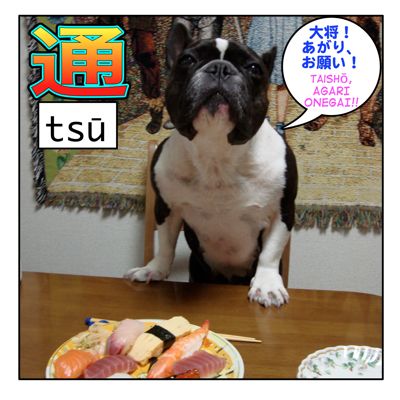

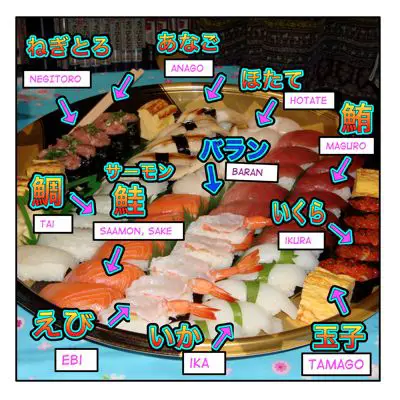


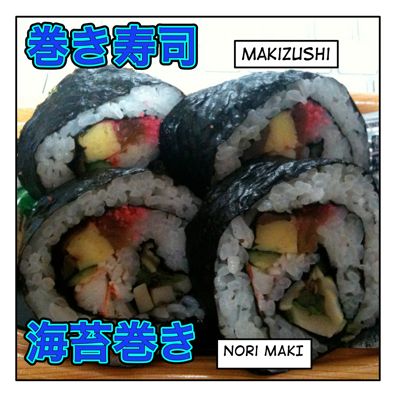
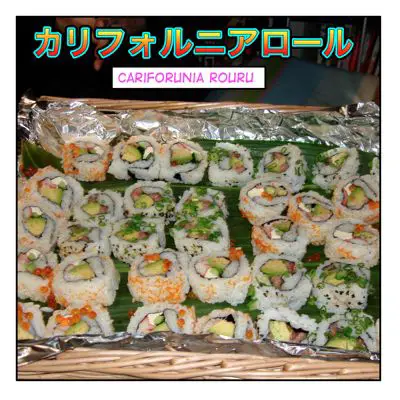


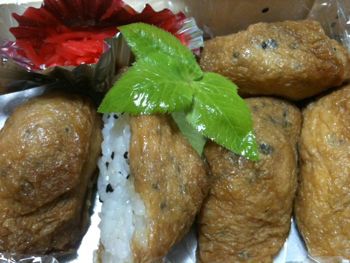
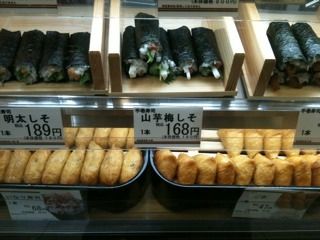
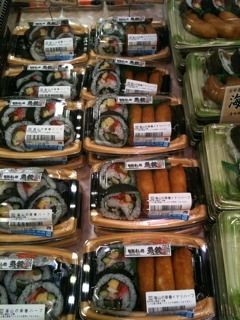







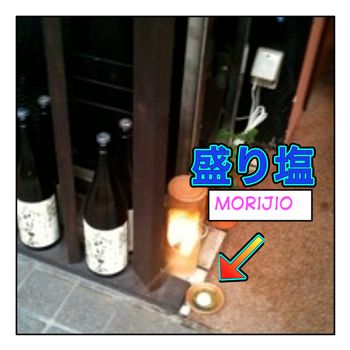

20 Comments
Hi Maggie Sensei,
May I know the difference between “itamae” and “taisho”?
Thank you!
板前 ( = itamae) means “(Japanese restaurant’s) chef” as an occupation.
大将( = taishou) originally means military “General” and it refers to owner of the restaurant or chief of chef.
常連客 (jourenkyaku), regular customers who go to the restaurant often and know the owner/chef well, you can address him “大将(たいしょう)” but you never address the chef, 板前 ( = itamae).
Sensei I watched the Japanese Tradition video. Do I really need to do the “maa, maa, maa” and “Oh toh toh toh” chant? XD
My bet is that one doesn’t need to do things 100 percent as it says in the video or do we sensei? But since the video is constantly reminding me that Japan is the “samurai country” I am afraid that if I don’t follow everything through a samurai may appear to put me in line. XD
By the way, sensei, my dream is to someday live in Japan, to try out living in Japan. :) However, beyond language and differences in culture, the is one thing that actually has me worried and makes me think that my experience there could be hard and that would be the fact that I…
don’t like fish. I really have the intention of trying Japanese dishes, that consist of fish, in spite of me disliking it, but I am asking myself, what if I just can’t eat them?
I really have the intention of trying Japanese dishes, that consist of fish, in spite of me disliking it, but I am asking myself, what if I just can’t eat them?  I really don’t want to portray myself as someone with a capricious take on food. :/ Of course, none of this is a question for sensei. XD
I really don’t want to portray myself as someone with a capricious take on food. :/ Of course, none of this is a question for sensei. XD
My question for sensei. Are there any common or traditional Japanese dishes that do not involve fish? :)
@NecroMadMat
Oh that video is a joke video. Everything in the video is so extreme and exaggerated. I would say 5 pct of the video is true. That is why it is funny.
Samurai have disappeared many many years ago so no worries.
You are right. We eat a lot of fish in Japan but you can survive here without eating fish. There are a variety of food in Japan so I am sure you can find something that you would like.
We do have traditional food without fish. Vegetable tempura, sukiyaki, shabushabu, beef bowls, etc.etc.
But one thing that I can advice you is to be open minded.
It would be much more fun to try many different things when you are in other country.
And people would love you if you at least try to adjust Japanese culture.
Sensei, I like the part when they say: “Taishou has a private life, let us not ask about it.”, whilst he is cleaning a knife. XD They convinced me. lol
Oh sensei, with your comment I would like to make sure, isn’t there someone that actually still addresses himself as samurai? I have seen some TV bangumi where some experts of Japanese sword make appearances but maybe they are just experts, right?
Yeah sensei, I’ll take your advice, I’d go open minded, if my plan to go to Japan works. :D I intend to try those fish dishes out, maybe they would make me like fish, right? :) Hopefully. I plan on trying Maggiesensei’s list in this website if I get to try out Japanese food. :D I’ll use it as a guide. :D
But yeah, my fear is to not being able to start liking fish. If for example I visit someone’s house I know that the percentage of having fish when invited to eat over there in Japan is very high, I really wouldn’t like to turn them down. I can learn customs and language but when one can’t eat something it becomes a problem, doesn’t it? Like, if as an example, someone gives Maggiesensei cat food to try. XD
I can learn customs and language but when one can’t eat something it becomes a problem, doesn’t it? Like, if as an example, someone gives Maggiesensei cat food to try. XD
But somehow I think it is great that Japan is a country with a diet based on fish. Girls over there seem to have a very pretty skin because of it. XD I bet Maggiesensei must have a really beautiful skin under all that pretty fur. XD
Sensei, I checked on those dishes you listed and they look delicious. As I suspected, Japanese dishes are very varied. :)
@NecroMadMat
Yes, I love the scene,too!
There must be some groups that they call themselves samurai but it is hard to find them. And it is totally illegal to carry Katana around now. They will be arrested right away.
Haha, as a matter of fact, I can eat cat food without any problems. (That’s why I am fat…)
If you are going to visit Japanese family or eat with Japanese people, just tell them
ごめんなさい。魚はちょっと苦手なので.. 。= Gomennasai. Sakana wa chotto nigate nanode… = I am sorry but I am not a big fan of fish.
They will understand you. There are Japanese people who don’t like fish as well.
I am not sure if you have seen this lesson (B-kyuu gurume) but there are cheap Japanese food as well.
Try them all!
Now I go check if I have a beautiful skin underneath of my fur….
Maggiesensei, about samurai, I learned that they were indeed prohibited to carry a sword in public, got to know it first from an anime. XD
I read that some fish is kind of dangerous for canines so please be careful sensei, ok? :) But I bet Yukarisama takes good care of you sensei. :)
I don’t think sensei looks fat at all. :/ But I guess it is a ladies thing to be overly critical of their weight. XD
Sensei I recall once reading that there was some Japanese talent that didn’t like fish and following a TV program she was critiqued for asking someone what was his/her favorite type of sushi. Can’t remember who she was though. So I guess I am not alone. lol Unfortunately, even here in my country I am an exemption to the norm, actually I don’t think I know someone else who doesn’t like fish like me… lol depressing.
I recall hearing an expression similar to what Maggiesensei wrote once, in a YouTube channel. I will practice it sensei, thank you very much. :)
Yeah sensei, I checked that lesson out. I can actually picture myself ordering different Japanese dishes and sitting there in my apartment saying: “Let me check if I like this one…” and so forth. XD
I wonder if Maggiesensei is intending to get a crazy haircut to check her skin. If that’s the case, please post pictures sensei. XD
@NecroMadMat
Yes, the simulation practice is very important! Be sure to visualize me in the scene and offering you a lot of fish.(・ω<) Thank you! You are the only one who doesn't think I am not fat. :) Yukari"sama" always eats delicious sweets in front of me. She is torturing me!
Woot. I will imagine Maggie-taishou serving me dishes. :) Maybe Yukarisama does that so that Maggiesensei can strengthen her will to resist sweets. ;)
@NecroMadMat
And you can say “ちょっと魚が苦手なので..” to me. Before you finish saying that I will eat yours. So no problem!
Oh, so kind sensei. :) Maybe I would invite Maggiesensei whenever I am invited to someone’s house so that Maggiesensei can take care of the fish. XD I guess some may argue that the hosts wouldn’t like it if I invite someone out of the blue like that to someone’s house, but once they see it is Maggiesensei and how cute she is they won’t mind, I bet. lol
@NecroMadMat
Great! Problem solved!! !happyface!
I think I’ll pass on anything 踊り! But I’m so glad that now I know what they call it so if I see that anywhere to avoid it!
The 稲荷寿司 sounds like a fantastic idea though!
I love sushi:):)
Thanks for a great lesson!!!
@KristinaMary
Haha! It’s true. It is very important to know what to avoid!
Thank you for your comment! Hope you come back to visit me soon!
Hi Sensei! Thanks for this lesson.
I’m a foodie at heart and I love sushi! Just looking at those pictures makes me hungry too. :D
@Amelie
Hi, Amelie! Ohhh you are sushi love,too, huh?
You know, in order to add more sushi pictures, I have to keep eating more sushi, Isn’t that “awful”?
I just found out that a kind of neta I enjoyed a lot when I was in China (abura bouzu, or escolar in English) isn’t allowed to be served as neta in Japan. I didn’t have any problems after eating it, so I was surprised to read that it can cause digestive problems! :S Anyway, it was tasty!
@DanielleCanada8
Hi Danielle!
Wow! You had あぶらぼうず? I am glad to hear it didn’t cause you any digestive problem!
I so wanna try eel and 踊り now!!
and I LOOOOOVE sushi!!! so yeah I am ぺこぺこ、なう。(笑)
@Aki
Really? You want to try 踊り???
Grilled eel is pretty good!! Haha! I made you ペコペコ!!! !Vsain!